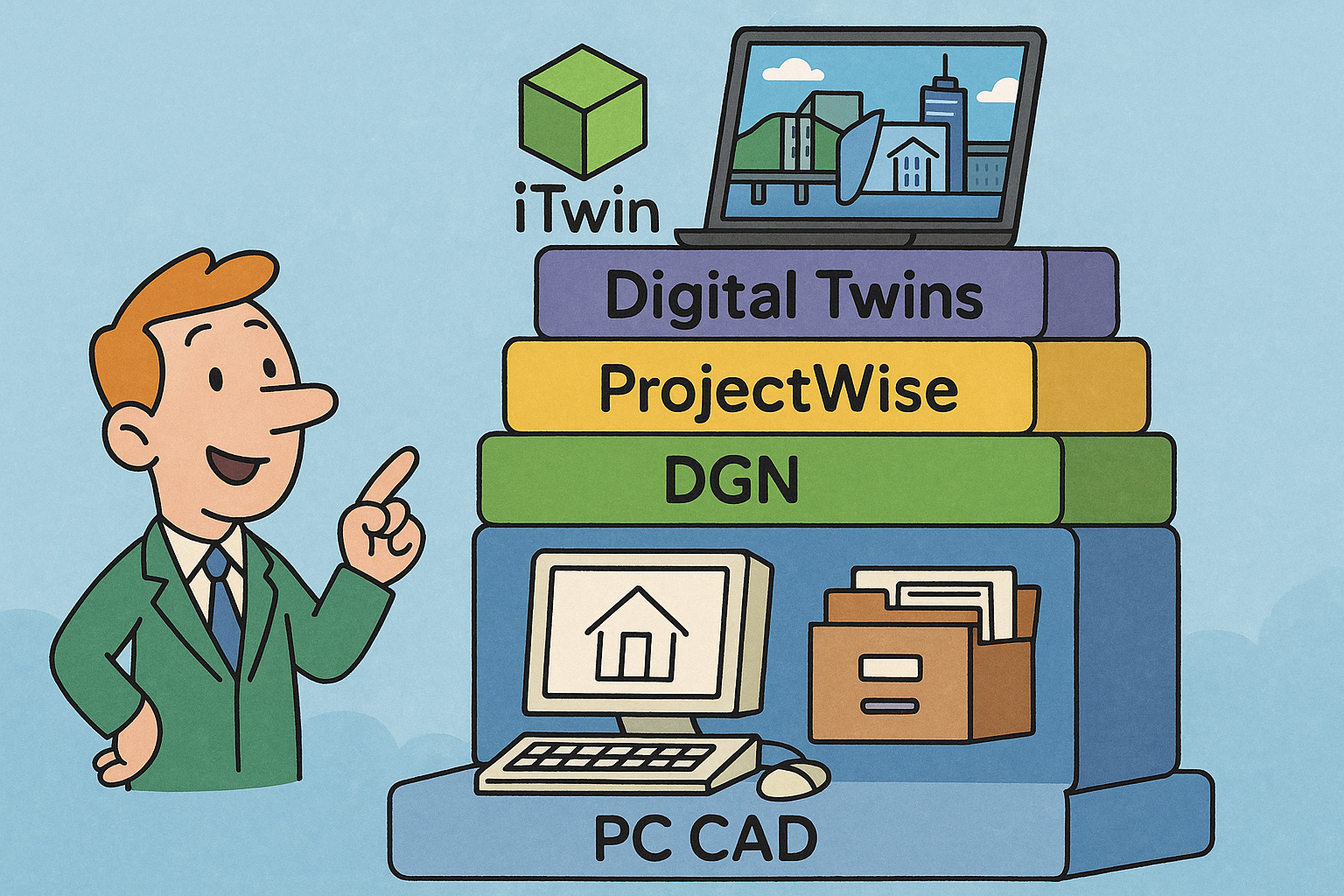Your Cart is Empty
Customer Testimonials
-
"Great customer service. The folks at Novedge were super helpful in navigating a somewhat complicated order including software upgrades and serial numbers in various stages of inactivity. They were friendly and helpful throughout the process.."
Ruben Ruckmark
"Quick & very helpful. We have been using Novedge for years and are very happy with their quick service when we need to make a purchase and excellent support resolving any issues."
Will Woodson
"Scott is the best. He reminds me about subscriptions dates, guides me in the correct direction for updates. He always responds promptly to me. He is literally the reason I continue to work with Novedge and will do so in the future."
Edward Mchugh
"Calvin Lok is “the man”. After my purchase of Sketchup 2021, he called me and provided step-by-step instructions to ease me through difficulties I was having with the setup of my new software."
Mike Borzage
Integrating Renewable Energy Analysis in Architectural Design Software
July 22, 2025 7 min read


Introduction and Rationale
In today’s architectural landscape, the integration of renewable energy analysis has emerged as an indispensable tool, revolutionizing design processes and enabling a deeper understanding of environmental performance in building projects. Architects and engineers are now able to incorporate detailed simulations of solar and wind effects into early design phases, thus ensuring that the building’s orientation, shading, and ventilation strategies are optimized from the outset. This evolution in design software reflects an industry-wide recognition that environmental performance can no longer be an afterthought but must be an integral part of the design philosophy. Harnessing the power of state-of-the-art simulation engines and integration techniques, professionals are equipped with data-driven insights that inform choices ranging from material selection to building geometry. The concept of solar analysis within these tools involves simulating sun paths and calculating solar irradiance distributed across different facade segments, while wind analysis employs computational fluid dynamics and wind tunnel simulations to accurately predict wind-induced pressures and thermal comfort levels. In doing so, not only do these sophisticated models help reduce energy consumption and improve occupant comfort, but they also contribute toward achieving stringent environmental certifications. This emphasis on renewable energy and environmental performance encourages designers to adopt an interdisciplinary approach, bridging the gap between aesthetic aspirations and scientific rigor.
Definition and Context of Solar and Wind Analysis
Architects now rely on advanced software that integrates solar analysis and wind simulation capabilities—two essential elements in today’s green building context. Detailed solar studies entail the simulation of sun paths throughout the year, enabling the identification of optimal building orientations and the planning of efficient shading mechanisms. Similarly, wind analysis is employed to predict natural ventilation possibilities, understand wind-induced pressures, and forecast overall thermal behavior influenced by airflow. The integration of these analyses into the design workflow enhances decision-making by providing targeted insights that are both quantitative and qualitative. By leveraging these insights, design teams can collaborate more effectively with engineers and sustainability experts, ensuring that every design detail contributes to improved energy efficiency. This comprehensive approach is supported by numerous software solutions that enable seamless data exchange and iterative design adjustments, allowing professionals to refine their designs with precision and confidence.Benefits for Architects and Engineers
The benefits realized by architects and engineers through the adoption of integrated environmental simulations are manifold. One notable advantage is the ability to optimize building orientation and shading strategies, which directly enhances energy efficiency throughout the building’s lifetime. By employing advanced solar analysis tools, designers can evaluate the annual solar radiation on building facades, predict energy gains through passive solar heating, and even determine the ideal placements for photovoltaic panels. Similarly, detailed wind analysis not only facilitates natural ventilation strategies but also assists in mitigating wind loads on building envelopes, thereby improving structural resilience. These capabilities lead to optimized building performance, reduced energy consumption, and lower carbon footprints—all while providing architects with a competitive edge in the burgeoning sustainable design market.
Enhanced Energy Efficiency and Sustainability Metrics
The adoption of renewable simulation tools is transforming the way that architectural and engineering teams approach sustainable design. Beyond mere compliance with building codes, these tools allow professionals to design with a forward-thinking perspective that anticipates future environmental challenges and regulations. Key benefits include enhanced energy efficiency achieved through iterative design adjustments made possible by real-time feedback from simulation engines. Moreover, interdisciplinary collaboration is significantly improved since all stakeholders—from designers and engineers to sustainability consultants—can view the same comprehensive analysis, which results in streamlined decision-making processes. The use of automated reports and visualization interfaces further aids in translating complex simulation data into actionable insights, ensuring that design decisions are both data-driven and visionary in scope. By integrating these advanced simulation capabilities into their workflows, designers are well-equipped to meet the dual demands of aesthetics and environmental responsibility.Core Features and Integration Techniques
Contemporary design software solutions have evolved to include highly sophisticated solar analysis and wind simulation features that empower professionals to conduct robust renewable energy assessments. In terms of solar analysis, modern software tools simulate sun paths across different times of the year, allowing architects to visualize solar irradiance on various building surfaces with impressive precision. Not only do these simulations account for the angle and intensity of sunlight, but they also integrate factors such as local weather conditions and shading from surrounding obstructions. Consequently, the resulting analyses provide vital data that informs decisions regarding window placement, facade treatments, and the incorporation of shading devices. Likewise, wind analysis is handled by implementing computational fluid dynamics techniques combined with wind tunnel simulations. This dual approach enables the accurate prediction of wind-induced forces on building facades and helps in understanding the building’s overall aerodynamic behavior. The synergy of these capabilities underscores the necessity of adopting comprehensive simulation tools that integrate seamlessly with traditional architectural and engineering workflows.
Software Capabilities for Solar Analysis
Several key functionalities define the advanced solar analysis modules integrated into modern design software. These include:- Simulating sun paths: Software tools render visual trajectories of the sun, enabling designers to assess the impact of sunlight on different parts of a building over various seasons.
- Measuring solar irradiance: Detailed quantification of solar energy received on building facades is fundamental for optimizing passive solar heating and informing the placement of renewable energy systems.
- Conducting daylighting studies: These tools help predict the distribution of natural light within interior spaces, which can minimize reliance on artificial lighting and reduce energy consumption.
- Thermal performance evaluation: By simulating the thermal effects of sunlight on building envelopes, designers can devise strategies to minimize heat gains or losses, enhancing overall thermal comfort.
Software Capabilities for Wind Analysis and Integration Approaches
On the wind analysis front, design software offers tools that simulate wind flow patterns using advanced computational methods such as computational fluid dynamics (CFD), which lay the groundwork for understanding wind behavior around and through building designs. Key features include:- Wind tunnel simulation: Virtual wind tunnels replicate real-world conditions, providing critical data on wind pressure distribution and turbulence around structures.
- Assessment of natural ventilation: Software tools identify and quantify natural ventilation potential, which may reduce dependence on mechanical systems and contribute to sustainable design goals.
- Evaluation of wind-induced pressures: Accurate simulation of pressures on building facades informs the design of structural elements capable of resisting wind loads.
Case Studies and Implementation Best Practices
The implementation of integrated simulation tools in the design process has been instrumental in advancing sustainable architectural projects across various contexts. Real-world applications have demonstrated how the use of advanced solar analysis and wind simulation capabilities contribute to optimizing building performance in terms of energy efficiency and environmental responsiveness. By comprehensively analyzing both solar exposure and wind dynamics early in the design phase, design teams can refine building geometries, select appropriate materials, and strategically position fenestrations to capitalize on the natural environment. These tools provide iterative feedback that underpins a collaborative approach among stakeholders, ensuring that discrepancies between aesthetic ambition and physical realities are minimized. Professionals benefit from the creation of standardized workflows that simplify the exchange of data between architectural models and simulation engines. Such best practices not only enhance interdisciplinary communication but also result in more predictable and favorable energy performance outcomes throughout a project’s lifecycle.
Best Practices for Implementation
To maximize the benefits of integrated renewable energy simulations, it is imperative to follow established best practices, such as:- Interdisciplinary collaboration: Bring designers, engineers, and sustainability consultants together early in the process to ensure that all perspectives are captured and incorporated.
- Standardized workflows: Develop uniform procedures and documentation practices to ensure consistency in data exchange, model updates, and analysis outputs.
- User-friendly interfaces: Leverage design software with intuitive interfaces that allow non-specialists to navigate complex simulation data confidently.
- Automated reporting: Use systems that generate automated analysis reports, thereby reducing the manual effort required to interpret data and accelerating decision-making.
Technical Challenges, Future Trends, and Conclusion
Despite the numerous advantages, integrating complex environmental simulation data into design workflows is not without its challenges. The computational demands of running high-fidelity solar analysis and wind simulations often necessitate robust hardware solutions and efficient data management frameworks. As simulation models become increasingly detailed and incorporate ever-larger datasets, ensuring computational efficiency without sacrificing precision poses a formidable challenge for software developers and users alike. Furthermore, designers must find the right balance between simulation accuracy and design iteration speed. For example, while detailed CFD-based wind simulations offer high precision, their time-intensive nature may impede rapid creative iterations. Overcoming these hurdles requires innovative software design strategies that leverage cloud computing, distributed processing, and advances in algorithm optimization. Consequently, the industry is witnessing a gradual shift towards real-time simulation methodologies and the integration of artificial intelligence (AI) that can predict and approximate environmental performance with remarkable accuracy.
Future Trends and Conclusive Remarks
Looking ahead, the intersection of AI, machine learning, and augmented reality (AR) in design software is set to transform how architects and engineers approach renewable energy analyses. With AI-assisted predictive models, design software can extrapolate simulation data to forecast building performance under a range of environmental conditions, thereby allowing for more proactive and resilient design choices. Moreover, the advent of AR provides the ability to overlay simulation data onto physical construction sites, enabling on-site adjustments and more dynamic design feedback. These emerging trends will not only improve the ease with which simulation data is interpreted but also drive the evolution of workflows towards more integrated, efficient, and sustainable practices. In summary, while the technical challenges associated with massive data sets and complex simulations remain significant, the future of design software is geared towards solutions that confer both accuracy and agility. Ultimately, the convergence of solar analysis and wind simulation within modern design software underscores the critical role that integrated environmental performance assessments play in shaping the sustainable, energy-efficient buildings of tomorrow.Also in Design News

Rhino 3D Tip: Panel-Based Documentation for Grasshopper Definitions
January 10, 2026 2 min read
Read More
Design Software History: Bentley Systems: From PC CAD to an Infrastructure Stack — DGN, ProjectWise, iTwin and Digital Twins
January 10, 2026 14 min read
Read More
Ethical Generative Design Toolchains: Objectives, Provenance, Safety, and Sustainable Optimization
January 10, 2026 13 min read
Read MoreSubscribe
Sign up to get the latest on sales, new releases and more …


